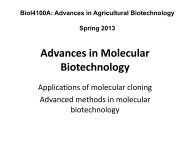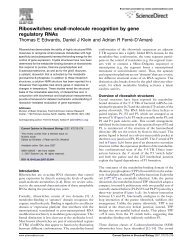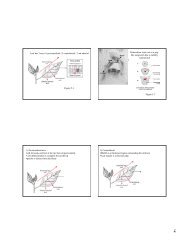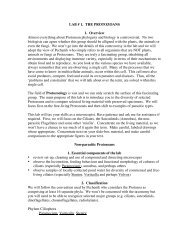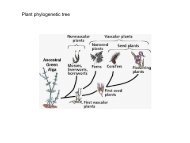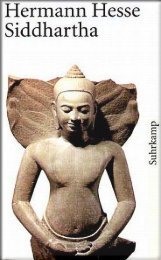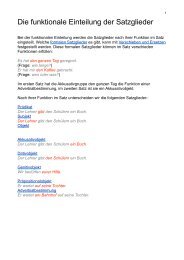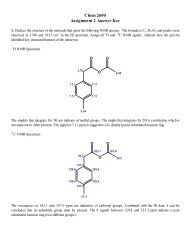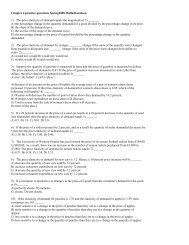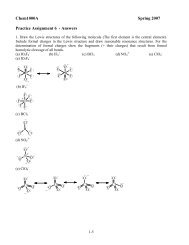Lecture 16-Rotifers.pdf - Classes at U. of L.
Lecture 16-Rotifers.pdf - Classes at U. of L.
Lecture 16-Rotifers.pdf - Classes at U. of L.
Create successful ePaper yourself
Turn your PDF publications into a flip-book with our unique Google optimized e-Paper software.
The Monogonont life cycle<br />
Usually while food and survival conditions<br />
are quite good most <strong>of</strong> the popul<strong>at</strong>ion are<br />
females which produce diploid eggs th<strong>at</strong><br />
h<strong>at</strong>ch to make identical copies <strong>of</strong> the<br />
female parent.<br />
During autumn the stimulus to undergo<br />
meiosis, and make haploid (mictic) eggs<br />
occurs, then if those eggs don’t get<br />
fertilized they h<strong>at</strong>ch out as males.<br />
Males will then seek out mictic females<br />
and have sex with them. The eggs<br />
produced are larger and contain more<br />
nutritional reserves than normal<br />
parthenogenetic eggs, and delay<br />
h<strong>at</strong>ching <strong>of</strong>ten till the following spring or<br />
when suitable conditions occur.<br />
Some females can do both-Amphoteric<br />
Pseudosexual eggs—parthenogenetic<br />
eggs th<strong>at</strong> look like resting eggs have been<br />
noted in some species.




